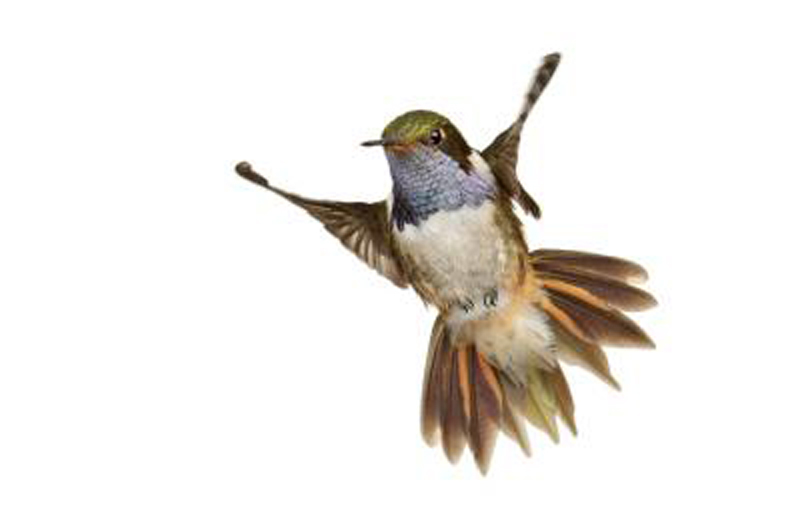Hummingbird Evolution Was Fast, but Is Slowing

Hummingbirds have evolved into hundreds of different species very rapidly over the past 22 million years, according to a study that presents the first-ever comprehensive hummingbird evolutionary tree.
A total of 338 hummingbird species are known to flutter the world today in a wide variety of environments, including highly inhospitable mountaintops with low oxygen levels. Researchers were interested in studying how these birds evolved to inhabit these harsh environments, but they needed a concrete family tree to do so. Such a tree had not yet been developed, so a team of researchers worked for about a decade to compile one using information from fossils, museum specimens and living species.
The new evolutionary tree, or phylogeny, shows that hummingbirds began splitting off from ancestral swifts and tree swifts roughly 42 million years ago, likely in Eurasia. The first evidence of the common ancestor of all modern hummingbirds appears much later, about 22 million years ago, in South America. Given the frequent feeding schedule the birds rely on to keep their wings flapping so quickly, researchers think the birds entered South America by way of North America, feeding along the way, rather than flying over the ocean. [Images: Beautiful Hummingbirds of the World]
Once in South America, the birds diversified rapidly into nine groups and hundreds of separate species that took advantage of many different types environments, but they all fed on nectar.
The researchers were surprised to find that a group of animals committed to such a limited food source would diversify and co-exist so extensively, study co-author Jim McGuire, a researcher at the University of Califronia, Berkeley, told Live Science.
"Would you expect to see 25 species of anteaters living in any one place?" McGuire said. "Hummingbirds all do the same thing, but they hyperdiversify, which is pretty remarkable and unexpected."
Even though all hummingbird species feed on nectar, their bills are shaped in distinct ways suited to different species of plants. By specializing in specific types of flowers, many hummingbird species are able to co-exist, with as many as 25 species living in the same place, further promoting diversification by allowing for this overlap in habitat use.
Get the world’s most fascinating discoveries delivered straight to your inbox.
Another reason the birds were able to diversify so rapidly was that they took advantage of otherwise fairly empty terrain, such as the rising Andes Mountains and uplifting Panama through geologic time, the team reports.
Although other groups of birds, such as passerines, contain more species, hummingbirds are still one of the most diverse groups of birds on the planet, McGuire said.
"There are other bird groups that are similarly diverse, but there aren't very many of them that have diversified to the same extent as hummingbirds have," McGuire said.
Today, the overall rate of hummingbird diversification has slowed, though particular groups are still diversifying quite rapidly and will likely continue to do so into the future, the team said.
The study findings are detailed today (April 3) in the journal Current Biology.
Follow Laura Poppick on Twitter. Follow us @livescience, Facebook & Google+. Original article on Live Science.



